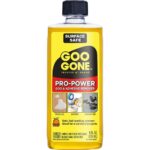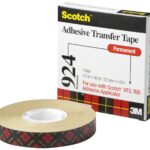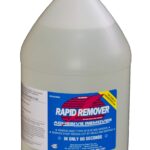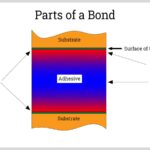Gluesticks are an essential tool for many craft and construction projects. They are a convenient, mess-free way to attach materials together. Gluesticks typically consist of a plastic tube filled with a strong adhesive. The adhesive is held in the tube until you apply pressure to the stick, at which point it softens and oozes out of the tube like toothpaste from a tube. Once the glue is applied, it bonds the two materials together instantly, creating a strong bond.
The bond created by the gluestick is usually permanent unless you apply a special solvent to separate the two materials. Gluesticks are available in a variety of sizes and shapes, making them suitable for different applications. Most are clear, allowing you to easily conceal the glue line between two materials. Gluesticks are an effective, affordable tool for many projects. They are easy to use, mess-free, and create a strong bond between two materials.
How glue sticks are made

Glue sticks are an essential tool in many craft and art projects. They are usually made of a type of plastic polymer, dissolved in a solvent such as water.
- First, the polymer is mixed with the solvent and heated until it liquefies.
- Next, dyes, fillers and other additives are added to the liquid to give it the desired color and texture.
- Then, the liquid is poured into molds and cooled until it solidifies into a solid shape.
- Finally, the solid glue stick is cut into individual sections, packaged, and shipped to stores.
- Glue sticks are a popular choice for paper crafts because they are easy to use and provide a strong hold that lasts.
How to make homemade glue sticks?
All you need are some simple ingredients that you can find in your local grocery store. First, you will need white school glue, vegetable oil, and a few drops of essential oils. Start by mixing the glue and vegetable oil together in a bowl until it becomes thick and creamy. After that, add a few drops of essential oils to the mixture. This will give your glue a pleasant scent and make it easier to apply.
Once the glue is ready, pour it into a plastic container with a lid. Use an old glue stick container or a small plastic cup. Once the glue is in the container, you can use a popsicle stick or a spoon to stir it. Then place the lid on top and store it in a cool, dry place. When you’re ready to use the glue, just take off the lid and dip the end of a popsicle stick or a small paint brush into the container. Spread the glue onto your project and let it dry. Homemade glue sticks are easy to make and can be used for a variety of projects. Whether you’re crafting a school project or creating something special, homemade glue sticks are an economical way to get the job done. Have fun experimenting with different fragrances and colors to make your own unique glue sticks.
Are glue sticks used with a glue gun waterproof?
How glue sticks are used can depend on the project you are working on. Glue sticks are generally used when the project requires a strong bond between two surfaces, such as paper, plastic, or fabric. When using a glue gun, glue sticks can be used to create a bond that is waterproof and weather-resistant. The heat from the glue gun will melt the glue stick, and when it cools, the bond is waterproof. Glue sticks come in a variety of sizes and colors, and can be used for different types of projects.
For instance, large and colorful glue sticks are great for larger projects, while small and clear glue sticks are better for smaller projects. Glue guns also come in different sizes, and the type of glue stick you use will depend on the size of glue gun you have. Generally speaking, the larger the glue gun, the larger the glue stick you will need. Overall, glue sticks are a great tool for creating a waterproof and weather-resistant bond when used with a glue gun. Just remember to select the right size and type of glue stick for your project and glue gun.
How do you make hot glue sticks?
Making hot glue sticks is fairly easy and can be done in the comfort of your own home.
- First, you need to gather all the materials you need, such as glue, wax, and any other ingredients you might have.
- Next, you need to melt the wax in a double boiler or a pot over low heat.
- Once the wax is melted, add the other ingredients and mix everything together.
- After that, you can either pour the hot mixture into a mold or use a syringe to fill the glue sticks.
- Finally, let the glue sticks cool and harden before using them.
- Once they are cooled, you can use the glue sticks in any crafting project.
What is the melting point of a glue stick?
Glue sticks are an essential tool for many craft projects and household repairs. They are usually made of a wax-like material that melts when heated, so that it can be spread to bond two surfaces together. The melting point of a glue stick depends on the type of material that it is made of. Generally, the melting point is between 120 degrees Fahrenheit and 200 degrees Fahrenheit, depending on the brand and formulation of the glue stick. When heated, the glue stick will become viscous and easily spreadable, allowing it to bond surfaces together. It is important to keep the temperature of the glue stick below the melting point in order to prevent it from becoming too liquid and running off the surfaces. Once the glue stick cools, it will become solid and the bond created will be secure and lasting.
How is glue sticks made
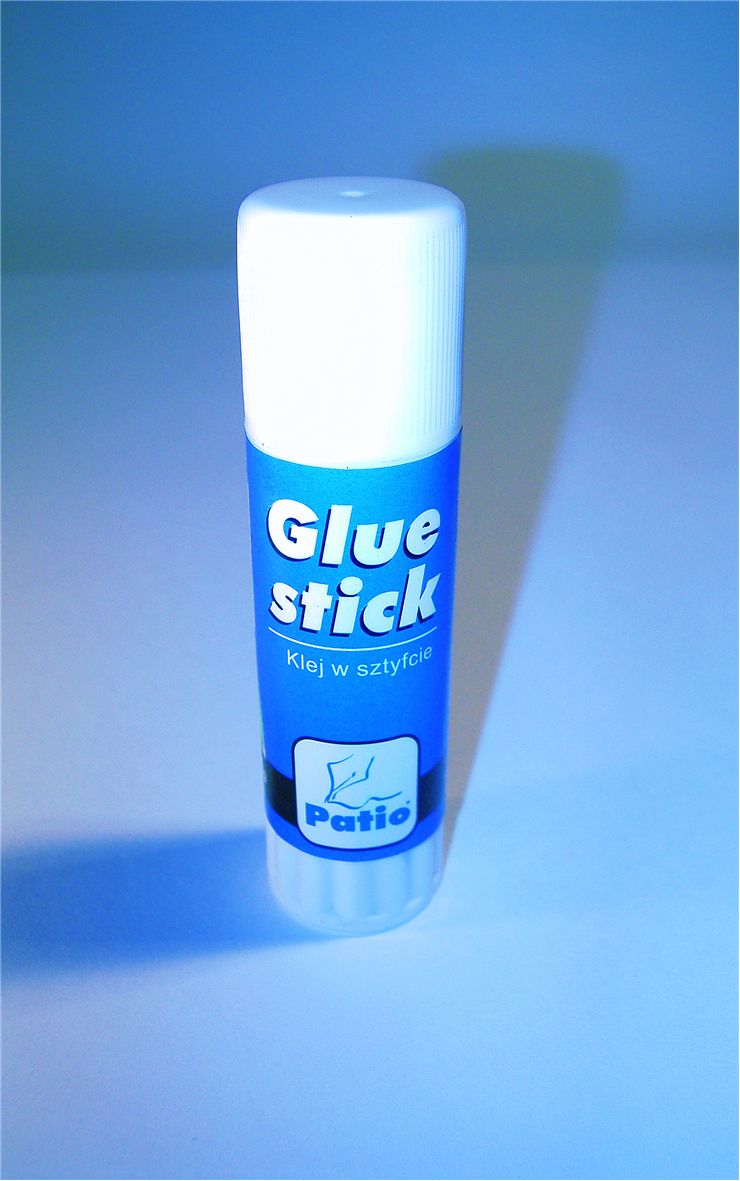
Glue sticks are small cylindrical sticks of adhesive used for bonding paper, cardboard, photos, and other lightweight materials. They are usually made from a combination of polyvinyl acetate (PVA) and other non-toxic ingredients. The glue stick material begins as a thick liquid that is heated and extruded into a solid cylindrical shape. The hot liquid is forced through a die to create the cylinder. The die is an opening with a specific shape that gives the glue stick its desired shape.
The glue stick is then cooled and sliced to the desired size. The sticks are then placed in a wrapper and packaged into boxes or containers. Finally, the glue sticks are tested to ensure they meet quality and safety standards. This includes testing for adhesion, flexibility, and other traits that make the glue stick an effective bonding material. Overall, the process of making glue sticks is relatively straightforward and efficient. It’s a great way to create a useful bonding material that is cost effective, easy to use, and safe for both children and adults.
How is glue made in a factory?
Glue is generally made from several base ingredients, such as polymers and resins, that are heated up in a large vat to create a liquid mixture. The mixture is then mixed together with various additives, such as pigments and binding agents, to create the desired adhesive properties. Once the ingredients are thoroughly mixed, they are allowed to cool then poured into molds. These molds are designed to create a specific shape and size of the glue product. After cooling and curing, the glue is then placed into containers and shipped to different locations.
The process of creating glue in a factory ensures that the adhesive is strong and dependable, as each batch is quality tested for consistency. This ensures that each product performs its job effectively and will last for many years. The key to how glue sticks is the adhesive properties, which are determined by the ingredients used and the production process. By understanding the production process, it is possible to create glue that is strong and long-lasting, making it a valuable resource for many industries.
Is glue stick made of plastic?
Glue sticks are a popular choice among crafters and DIYers for a variety of projects. They are simple to use and can be used to bond a variety of materials together. Glue sticks are made up of a combination of different materials, and one of these materials is plastic. The plastic that is used in glue sticks is often referred to as a polymer. This is because it is a combination of different types of plastic.
The polymer that is used in glue sticks is typically a high density polyethylene, which is a very strong and durable type of plastic. The plastic that is used in glue sticks is what gives the product its strong adhesive properties. It is able to bond a variety of materials together, and even metals and plastic. The glue stick is typically made up of a mixture of solvents, resins, and plasticizers, along with the polymer. These ingredients are melted together and formed into a stick. Once the stick is cooled, it is ready to be used. Overall, glue sticks are an excellent choice for a variety of projects due to their strong adhesive properties. They are made up of a combination of different materials, and one of these materials is plastic. The plastic is what gives the glue stick its properties, and it can be used to bond a variety of materials together.
How is school glue made?
School glue sticks are mainly made from polyvinyl acetate (PVA). This substance is created by polymerizing vinyl acetate monomer. The monomer is then reacted with acetic acid in order to create the PVA. To create a sticky, adhesive substance, other components such as borax and water are added to the PVA. Borax, also known as sodium borate, is a natural mineral compound that acts as a preservative and emulsifier.
The combination of these ingredients creates a thick, sticky liquid. This liquid is then put into packaging containers, such as bottles and tubes, so that it can be sold to consumers. School glue sticks are particularly popular with students because they are easy to use and clean up. The glue dries quickly, is nontoxic, and can be used for a variety of craft projects. School glue sticks are also available in different colors and sizes, so they can be used for a variety of applications. Whether it’s for a school project, a craft project, or even a repair job, school glue sticks are a great way to get the job done.
How to use a glue stick without a glue gun?
Glue sticks are a great way to add a strong bond to your project without the fuss of a glue gun. Using a glue stick is easy and requires minimal effort. First, take out the glue stick and remove the protective cover. Then, twist the bottom of the stick as you apply a thin layer of glue to the item you’d like to stick together. Be sure to hold the stick at a 45-degree angle while twisting, as this will ensure even coverage.
When the items are ready to be stuck, press the pieces together firmly. Make sure that you get a good seal and that the edges of the items are firmly pressed together. Hold them together for at least ten seconds to allow the glue to set. If glue is dripping from the items, use a clean cloth to wipe away the excess. Keep in mind that some glue sticks are not permanent and may require re-gluing over time. To avoid this, use a more permanent glue stick. Using a glue stick is a great way to quickly bond items without the mess of a glue gun. It is important to use the glue stick correctly for the best possible results.
Where are glue sticks made
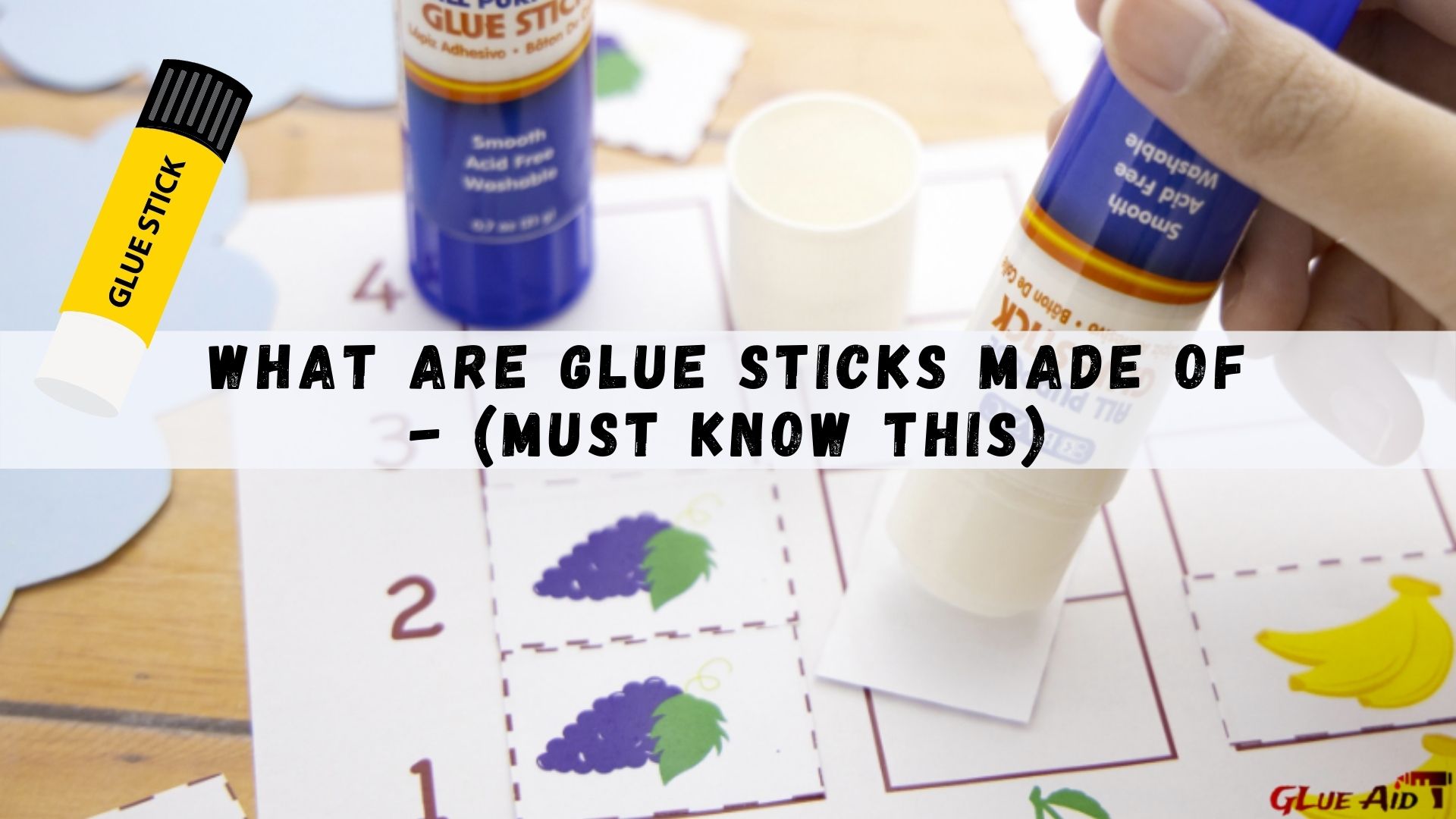
Glue sticks are an adhesive product that have been around for many years. They are made up of a solid substance contained in a plastic tube. The substance is typically a mixture of a resin and a wax, which is heated until it melts and can be applied to objects. Glue sticks can be made in a variety of sizes and colors. Most glue sticks are made from a combination of synthetic, natural, and animal-based ingredients.
The resin used is usually a type of hot-melt adhesive, which is heated until it melts and can be applied to a surface. The wax used is usually a petroleum-based wax that helps the adhesive to bond quickly. Glue sticks are most commonly manufactured in factories located in Asia, Europe, and the United States. Many companies that produce glue sticks buy their supplies from other countries and then assemble them in their own factories. The ingredients for the glue are sourced from different parts of the world depending on the manufacturer. The manufacturing process for glue sticks generally starts with the ingredients being mixed together in a large vat. The mixture is then poured into a mold and heated until it solidifies. The final product is then cooled, packaged, and shipped to stores. Glue sticks are a versatile and convenient adhesive product that can be used in a variety of applications. From repairing broken items to crafting projects, glue sticks are an essential item in any toolbox or home office. They are manufactured in many countries around the world and are a popular choice for many households.
Where do glue sticks come from?
Glue sticks are an essential tool for many craft and school projects. They are an adhesive that are easy to use, especially for young children. Glue sticks typically consist of a mixture of polyvinyl acetate (PVA) and a resin that gives the glue stick a tacky texture. This allows the stick to adhere to different surfaces. In addition, the low heat required to activate the adhesive ensures it won’t damage delicate materials.
Glue sticks are a relatively new invention. They were first developed in the late 1970s, when an American company named Bostik discovered that PVA and a type of wax would create an adhesive that is easy to use and dries quickly. Glue sticks are now produced by many different companies and come in a variety of packaging. They are available in a range of sizes, from small individual sticks to larger containers. Today, glue sticks are widely used in classrooms, homes, and craft projects. They are an affordable and easy to use solution for sticking items together.
How do glue sticks work
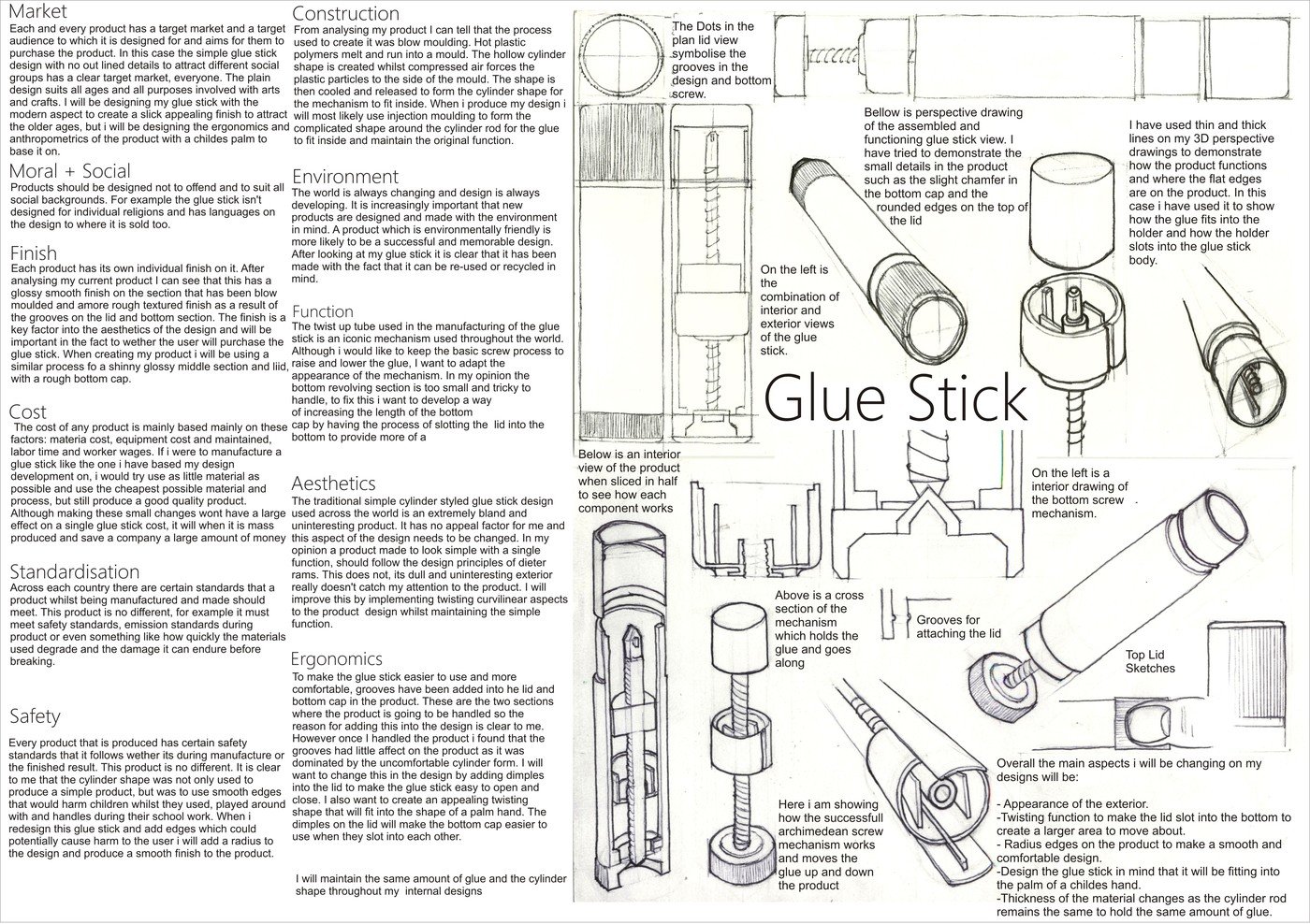
Glue sticks are a type of adhesive used to bond two objects together. They are easy to use and provide an even spread of glue. Glue sticks are made of a mixture of polymers and resins that are melted and shaped into a solid stick. When the glue stick is applied to two surfaces, the heat from the friction between the two surfaces and the pressure of the application combine to liquefy the glue stick. This liquefied glue is then absorbed by the material, allowing the objects to stick together.
Glue sticks are great for a variety of applications such as arts and crafts, scrapbooking, and school projects. They are also a great choice for making repairs around the home. Glue sticks are usually non-toxic and are safe for use with children and pets. Due to their easy application and non-toxic nature, glue sticks are the preferred choice for many people. In addition, glue sticks can dry quickly, making them a great choice for projects that require quick results. Glue sticks are a great solution for everyday bonding tasks. They are easy to use, safe, non-toxic, and dry quickly. With a variety of applications, glue sticks are an invaluable tool for any craftsman or do-it-yourselfer.
How does a glue stick mechanism work?
Glue sticks are a popular adhesive used for a variety of projects. They are easy to use and store due to their cylindrical shape, and are a great alternative to other types of glue. The mechanism behind a glue stick works by melting the adhesive inside so that it can be applied to the surfaces that need to be bound. This is done by heating the glue stick inside of a hot glue gun. When the glue is heated, it becomes malleable and can then be applied to the desired surface.
The glue stick will then cool and harden, forming a strong bond between the two objects. This bond can be broken apart with some effort, but it is not easily removed. The type of glue stick used also affects how well the bond will hold. Different types of glue sticks can be found that are suited to different types of materials, such as fabric, paper, plastic, and even metal. If the glue stick is heated too quickly or for too long, it can become unusable. It is important to follow the instructions on the packaging of the glue stick to ensure that the adhesive forms a strong bond and does not become damaged. Overall, the glue stick mechanism is a simple yet effective way to bond two surfaces together. There are many types of glue sticks available, making it easy to find one that suits your specific project needs.
What is inside a glue stick?
Inside the tube is a solid adhesive material that is a combination of resins, solvents and other ingredients. When the stick is heated, the ingredients liquify, allowing it to be applied as a thin, even layer. The adhesive then cools and hardens, forming a strong bond between the two surfaces being joined. Glue sticks are designed to be used on porous surfaces such as paper, cardboard and fabric. They are also suitable for adhering non-porous materials such as plastic, glass and metal. Glue sticks provide an easy way to make sure the bonding surfaces remain firmly in place.
How does glue make things stick?
Glue works by forming a strong bond between two materials, ensuring that they remain attached for a long time. The secret behind how glue sticks to things is a process called adhesion. Adhesion is when molecules from the glue stick to molecules on the surface of the object or material. This forms a strong bond between the two that holds them together. The bond formed by glue is so strong that it’s difficult to ever break it.
This makes it ideal for sticking objects and materials together in a variety of applications. The type of glue used will depend on the object or material that needs to be stuck. For example, wood glue is often used to stick wood together, while rubber cement is used to stick rubber to other materials. Different glues also have different drying times, so you should always consult the instructions on the glue before using it. Overall, glue is an incredibly useful substance for sticking things together. It’s easy to use and provides a strong, long-lasting bond that can be used in a range of different applications.
Do hot glue sticks work on fabric?
Hot glue sticks are a great way to attach fabric to other materials. The adhesive is strong and can handle a lot of heat, making it ideal for materials like fabric. In general, hot glue sticks work well on most fabrics, including denim, cotton, and wool. It’s important to note, however, that some fabrics, like silk and velvet, may not be compatible with hot glue sticks. When using hot glue sticks on fabric, it’s best to test it in an inconspicuous spot first, to make sure it won’t damage the fabric.
Additionally, it’s important to make sure there are no loose fibers on the fabric before applying the glue, as it can cause the fabric to fray over time. When using hot glue sticks on fabric, it’s best to heat the glue gun up to the correct temperature and apply the glue to the fabric. You may need to press the fabric firmly onto the adhesive for a few seconds to ensure the glue sticks. After the glue has cooled, the bond should be strong enough to last. In conclusion, hot glue sticks can be used on most fabrics, with the exception of silk and velvet. To get the best results, make sure the fabric is clean, the glue gun is heated to the correct temperature, and you press the fabric firmly onto the glue. With the right technique, you can get a strong and durable bond that will last.
How long do glue sticks take to dry?
Glue sticks have become a popular adhesive for many craft and home projects. They are especially useful when you need to secure lightweight materials such as paper, card, fabric, and foam. But how long do glue sticks take to dry? This varies depending on the type of glue stick you are using and the environmental conditions. Generally, most glue sticks dry quickly, within seconds. However, some may take up to 60 seconds to dry completely.
If you would like a faster drying time, there are glue sticks available that are designed to dry quickly. These usually contain a higher concentration of adhesive and can dry within seconds. When using a glue stick, it is important to remember to press the pieces together firmly while the glue is still wet. This will ensure that the adhesive adheres and provides a strong bond. You should also take care to let the glue dry completely before moving or shaking the object that you have glued. Otherwise, the connection may not be secure and could come apart. In conclusion, glue sticks are a great adhesive for many projects and usually dry quickly. With a few simple tips, you can ensure that your projects are glued securely and last for a long time.
How does glue stick to itself?
Glue is made up of a variety of ingredients, such as water, resins, and adhesives. When it comes into contact with itself, these ingredients react together to create a strong bond. The molecules in the glue swell, allowing them to interlock and form a strong bond with each other. This bond is strong enough to make the glue stick to itself, creating a permanent bond. Additionally, some glues contain substances that create a chemical reaction when they come into contact with each other, further aiding in the strength of the bond. In the end, the glue bonds together to form a strong and lasting bond.
What is the chemical bond of glue?
Glue is made up of polymers, which are large molecules made of repeating units. The molecules are linked together by chemical bonds known as covalent bonds. These covalent bonds form when two atoms share electrons with each other, which creates a strong bond between them. The strength of the bond depends on the number of shared electrons and how close the two atoms are to each other. In the case of glue, the molecules are held together by a network of covalent bonds, giving it its strong adhesive properties.
This network of covalent bonds enables the glue to form a strong bond between two surfaces, allowing it to stick together. The strength of the bond between the glue and the surface will depend on the type of glue used, as well as the type of surface. For example, when using super glue, the bond is very strong as the glue is designed to form an almost irreversible bond. In conclusion, the chemical bond is an essential part of how glue sticks, as it is the force that holds the molecules together and forms a strong bond between two surfaces.
How to make glue stick better
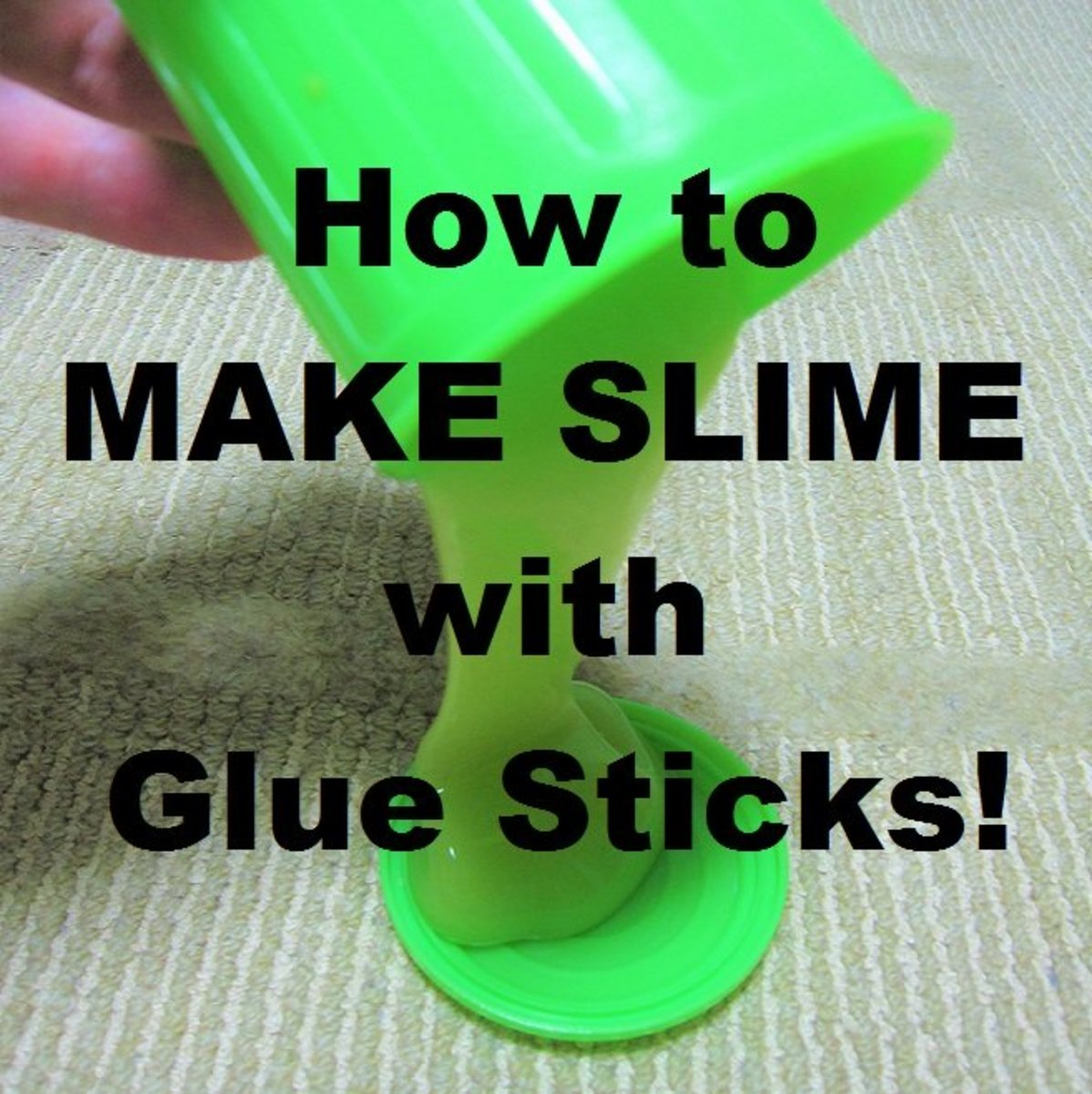
Making glue stick better can be easily done with a few simple steps. First, ensure the surfaces you are planning to stick together are clean and dry. Any dirt, grease, or moisture can weaken the bond strength of glue. Second, choose the right type of glue for your project. Different materials require different adhesives and using the wrong type of glue could cause it to not stick well.
Third, apply the glue to both surfaces evenly and generously. This will create a stronger bond since more contact will be made between the two surfaces. Fourth, press the two surfaces firmly together for a few minutes to allow the glue to set and create a stronger bond. Finally, leave your glue project undisturbed for at least 24 hours to ensure the bond is strong. Proper curing time is needed to ensure the glue sticks well. By following these simple steps, you can make sure your glue sticks better and your project will be successful.
Does heat make glue stick better?
Heat can be a useful tool when it comes to making glue stick better. When you increase the temperature of the glue and the surface it is bonding to, it can help the glue to bond more effectively. This is because the heat causes the molecules in the glue to become more active, which helps them to cling more strongly to the surface. When using heat to make glue stick better, it is important to use the correct temperature, as too much heat can cause the glue to become brittle and ineffective. A heat gun or a hairdryer can be used to heat the glue, with the temperature usually ranging from around 50°C to 80°C.
Different types of glue will react differently to different levels of heat. Superglues, for example, may need to be heated to a higher temperature than standard glue in order to achieve a strong bond. It is important to check the manufacturer’s recommendations before using heat to make glue stick better. When using heat to make glue stick better, it is important to do so in a safe and well-ventilated area, as the fumes released by the glue can be hazardous. It is also important to use appropriate protective equipment, such as gloves and safety glasses, to protect yourself from any potential injuries. In conclusion, heat can be an effective tool to make glue stick better, but it is important to use the correct temperature and safety precautions. If used correctly, heat can help to create a strong and durable bond between two surfaces.
What is the best glue to use?
Glue sticks are a versatile and popular adhesive used for many everyday tasks and crafts. Depending on the project, it is important to choose the right glue for the job. The best glue to use for most projects is a craft glue like all-purpose glue, super glue, fabric glue, or hot glue. All-purpose glue is suitable for most craft projects and can be used on paper, cardboard, fabric, leather, and some plastics. Super glue is great for quickly bonding two non-porous surfaces, like metal and glass.
Fabric glue is specially formulated for fabrics and can be used for hemming, appliqués, and more. Hot glue is ideal for intricate projects like assembling paper flowers and scrapbooking. It is also incredibly fast-drying and weatherproof, making it great for outdoor projects. When using glue sticks, it is important to find the right product for the job to ensure the best results.
How do you stick something without glue?
But there are other ways of sticking things together without glue. For example, you can use tape, such as double-sided tape or masking tape. These tapes can hold objects together, but the bond isn’t as strong as when you use glue. Another way to stick something without glue is to use interlocking shapes or pins. You can find them in a range of sizes and materials, and they are designed to fit snugly together.
These can be used for items such as frames or boxes, and they provide a secure connection without the need for glue. You can also use magnets to stick items together. Magnets are strong enough to hold objects in place, and they can be used for a range of items from paperclips to sculptures. Thread can also be used as an adhesive. Thread is strong and durable and can be used to sew items together securely. This method is effective for items such as fabric and leather. Finally, there is the option of using Velcro. Velcro is a unique way to stick items together without the use of glue. It consists of two parts, a hook and a loop, which attach themselves to one another when pressed together. Velcro is popular for items such as shoes and bags.
How to make slime with just a glue stick?
All you need is some glue sticks, a bowl, and a few other common items. To get started, place the glue stick in the bowl and break it up. Pour in some warm water and mix everything together. The glue should start to thicken and become slimy. Next, add a few drops of food coloring to the mixture, stirring it after each addition.
You can also add a few drops of scented oil to give your slime an extra boost of flavor. Once you’ve reached the desired consistency, remove the slime from the bowl and knead it with your hands. You can also add some glitter or beads to the slime for an extra special touch. When you’re done, store your slime in an airtight container. This will help keep it fresh and stretchy for longer. With just a few simple steps, you can easily make slime with just a glue stick!
What is in a glue stick
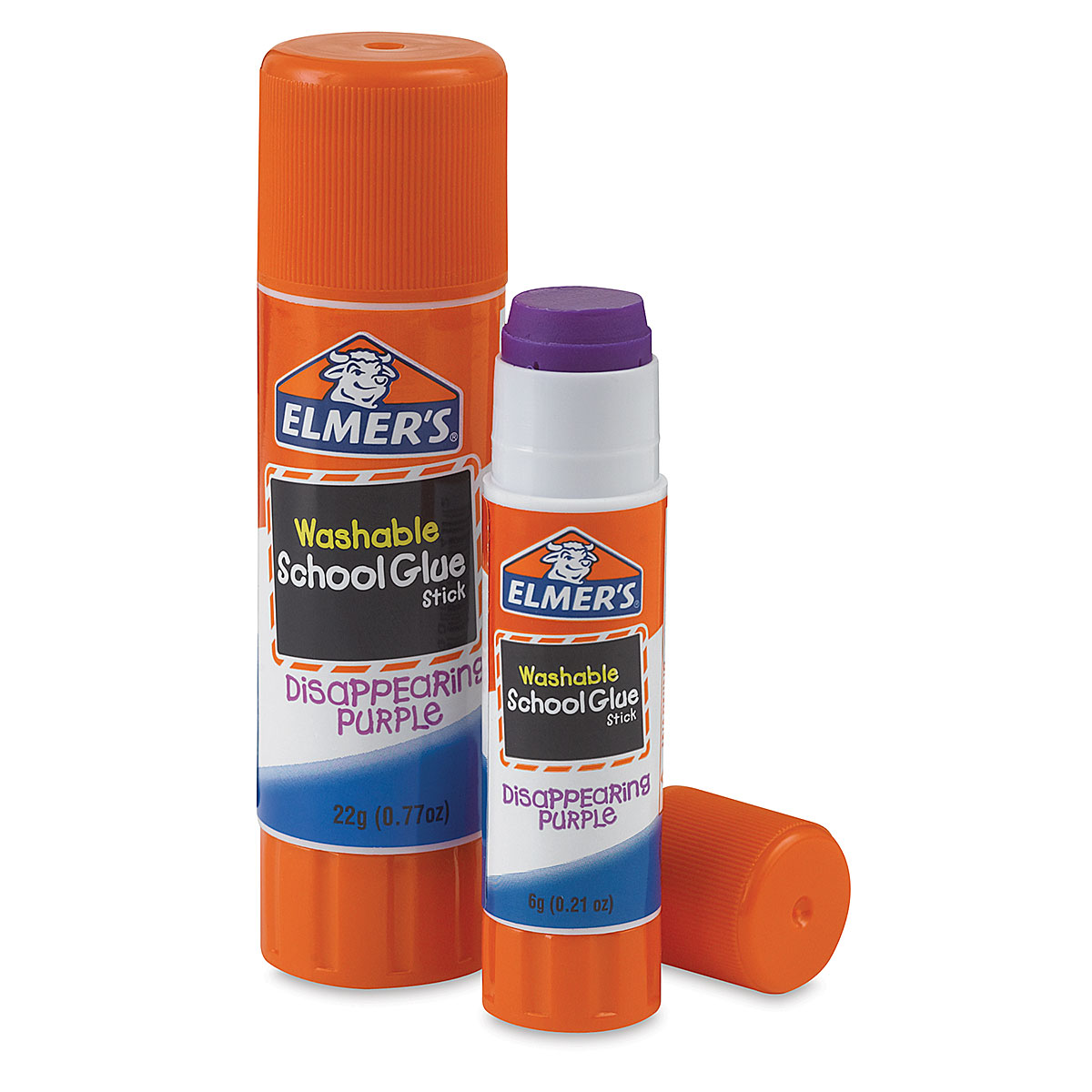
It is typically made of a combination of polyvinyl acetate (PVA) and wax and comes in solid form. To use a glue stick, you simply rub the solid stick against the surface you want to adhere. As the glue stick is rubbed, both the PVA and wax melt and the adhesive sticks to the surface. Glue sticks make it easy to apply adhesive to a variety of materials with precision and minimal mess. They are particularly popular with children, as the solid sticks are easier to use than traditional liquid glues which can be messy and difficult to handle.
In addition to adhering paper, glue sticks can also be used to secure items like felt, fabric, and ribbon. They are also great for crafting projects that require clean lines and no mess. When it comes to adhering paper, glue sticks are a must-have for any arts and crafts enthusiast. They make it easy to securely stick paper, fabric, and other lightweight materials with ease.
Are glue sticks toxic?
Glue sticks are a type of adhesive, commonly used for craft projects. They are usually composed of a material such as vinyl acetate or polyvinyl acetate. These materials are generally non-toxic, which means they pose no health risk when used in a well-ventilated area. However, if glue sticks are inhaled or ingested, they can be dangerous. It is important to keep glue sticks away from children, who might be tempted to put it in their mouths.
It is also important to use them in a well-ventilated area and avoid direct contact with skin or eyes. If you do accidentally get glue stuck on your skin or in your eyes, it is important to rinse the area with water as soon as possible. If the glue has already dried, it can be removed with an oil-based substance such as vegetable oil. Overall, glue sticks are not toxic when used correctly. However, it is important to use them with caution and keep them away from children. If used incorrectly, the adhesive can cause irritation or other health risks.
Can I lick a glue stick?
Glue sticks are a great way to quickly and easily adhere materials together! They come in a variety of shapes, sizes, and colors, and are often made of non-toxic, water-soluble glue. When applying glue to paper, cardboard, or other materials, the glue stick is used to spread an even layer of adhesive. A common question asked by many is “Can I lick a glue stick?” The answer is no, glue sticks are not meant to be eaten or licked. As mentioned, they are often made of a non-toxic, water-soluble glue, but that does not make them safe to consume. Ingesting glue can be dangerous and may even lead to an upset stomach.
It is important to note that even though glue sticks are not meant to be consumed, they can still be hazardous to children. Ingesting any type of glue can lead to severe health issues, so it is important to store glue sticks in a safe place where children cannot reach them. Glue sticks are an essential tool in any craft room or school classroom. They can be used to adhere a variety of materials together quickly and easily. In order to keep everyone safe, remember to keep glue sticks out of reach of children and never allow them to lick or eat it.
What happens if I lick a glue stick?
Glue sticks are a great way to stick things together without the mess of liquid glue. However, if you find yourself tempted to lick a glue stick, you should know that it is not a good idea. Ingesting glue can lead to nausea, vomiting, and other unpleasant symptoms. In severe cases, it can even cause a blockage in the intestines, requiring medical attention. In addition, some glue sticks contain chemicals that can irritate your mouth and throat.
These chemicals can lead to even more serious problems if ingested in large quantities. If you accidentally swallow some glue, it’s best to drink plenty of water and contact your doctor immediately. In some cases, the doctor may advise that you induce vomiting. In short, it is best to avoid licking glue sticks. If you do swallow any, make sure to seek medical attention right away.
What glue sticks made out of

Glue sticks are made from a combination of various materials. The base of glue sticks is usually a form of adhesive, such as a synthetic adhesive, that forms a bond when heated. This adhesive is also mixed with waxes, resins, and other materials to create the desired viscosity and adhesion. The waxes help the glue stick to hold its shape and set quickly, while the resins increase the adhesion of the glue. Other materials such as solvents are used to ensure the glue sticks are easy to apply.
Glue sticks can be used on a variety of surfaces, including paper, cardboard, plastic, and fabric. They are ideal for sealing envelopes, gluing paper or cardboard, and adhering fabric. Glue sticks are also great for crafts and school projects because they are easy to use and clean up.
What is glue sticks made from?
Glue sticks are a handy and easy-to-use adhesive that is perfect for school and craft projects. They are made from a combination of polymer resins and non-toxic adhesives. The resins provide the glue with strength and flexibility, while the adhesives give the glue stick its glue-like consistency. The glue sticks also contain various ingredients such as waxes, solvents, and dyes, which help to improve the adhesive properties of the glue and give it a smooth texture. These ingredients have been carefully chosen to ensure that the glue stick is non-toxic, safe to use, and has a long shelf life.
In addition to being safe and easy to use, glue sticks are also very versatile. You can use them to glue paper, fabric, wood, plastic, metal, ceramic, and more. They are ideal for projects such as scrapbooking, card making, jewelry making, and more. Glue sticks are designed to dry quickly and hold firmly, allowing you to finish up projects quickly. The glue also has a strong bond that is resistant to water and other liquids, so your projects will stay intact even after they come into contact with moisture. Overall, glue sticks are an essential tool for any crafter or school student. They are easy to use, safe, and very versatile. With a little bit of practice, you will be able to create beautiful projects with ease.

